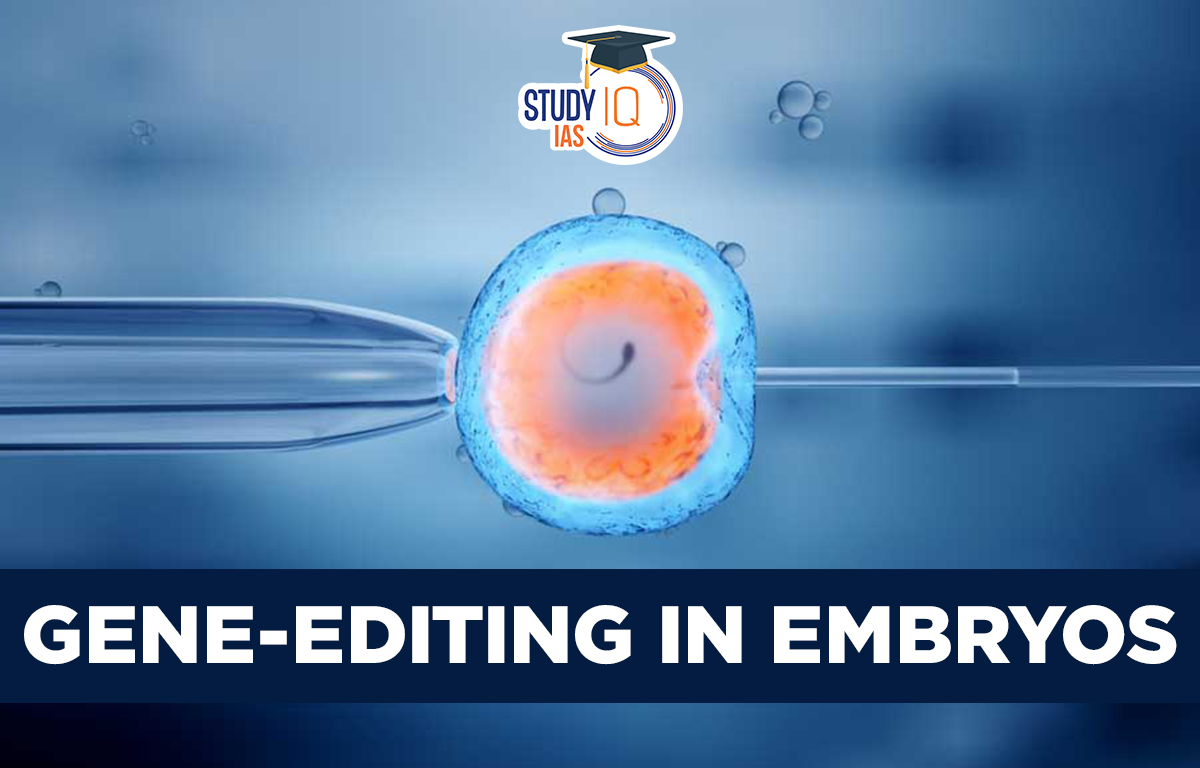Table of Contents
Context: A new study published in the journal Nature Communications has warned of the potential consequences of gene editing in embryos, which is still not fully understood.
Key Findings of the Study
- Using Clustered Regularly Interspaced Short Palindromic Repeats (CRISPR) to delete harmful disease-causing mutations could create more problems.
- CRISPR could lead to extensive gene copying from one parent to another, potentially increasing the risk of diseases.
- The extent of the DNA damage induced by CRISPR and how cells respond to it is still not fully known.
- The technology used to test gene-edited embryos could reduce the accuracy of genetic testing, leading to the misdiagnosis of embryos.
- The researchers concluded that such limitations must be addressed before gene editing technology can be used.
- Previously, a Chinese scientist who announced the birth of gene-edited twins in 2018, had used CRISPR to make the embryos resistant to the human immunodeficiency virus (HIV).
What is Gene Editing in Embryos?
- Gene editing in embryos involves using a technology called CRISPR-Cas9 to make precise, targeted changes to the DNA of an embryo at an early stage of development.
- This technology allows scientists to add, remove or alter specific genes in the embryo’s DNA.
- The process of gene editing in embryos:
- Microinjection: The process involves introducing the CRISPR-Cas9 system into the embryo using a technique called microinjection.
- The CRISPR-Cas9 system includes two components: a guide RNA that can recognize a specific DNA sequence, and the Cas9 protein that can cut the DNA at that sequence.
- Once the CRISPR-Cas9 system is introduced into the embryo, it can be used to cut the DNA at the desired location and then insert, delete or replace specific genes.
- The embryo is then allowed to develop into a fetus and eventually a baby.
Potential Advantages of Gene Editing in Embryos
- Prevention of Genetic Diseases: By editing out disease-causing genes, it may be possible to prevent inherited genetic diseases in future generations.
- Early Detection and Correction: Gene editing in embryos allows for the detection and correction of genetic mutations at an early stage of development, potentially preventing the development of disease.
- Expanded Genetic Diversity: Gene editing could enable the introduction of beneficial genetic traits into the human population, such as resistance to infectious diseases.
- Improved Understanding of Human Development: Gene editing in embryos could help researchers better understand the role of specific genes in human development.
Challenges and Concerns Associated with Gene Editing in Embryos
- Safety: There is a risk of unintended consequences, including off-target effects or unexpected changes to the DNA that could lead to health problems later in life.
- Ethical Concerns: There are concerns about the use of gene editing for non-medical purposes, such as creating “designer babies” with enhanced physical or mental traits.
- Access: Gene editing is an expensive and technically complex procedure, and it may not be accessible to all populations, leading to potential inequalities in healthcare.
- Unintended Consequences: The long-term effects of gene editing in embryos are not well understood, and there is concern that edited genes could have unexpected effects on future generations.
- Regulatory Challenges: There is currently a lack of clear regulations surrounding gene editing in embryos, making it difficult to ensure that the technology is used safely and responsibly.



 Red-crowned Roofed Turtles: Characterist...
Red-crowned Roofed Turtles: Characterist...
 Padma Awards 2025 Winners List, Check Na...
Padma Awards 2025 Winners List, Check Na...
 International Labour Day 2025, Theme, Hi...
International Labour Day 2025, Theme, Hi...





















